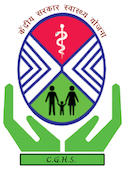Best Ayurvedic Treatment of Cerebellar Atrophy in India – Sukhayu Ayurveda
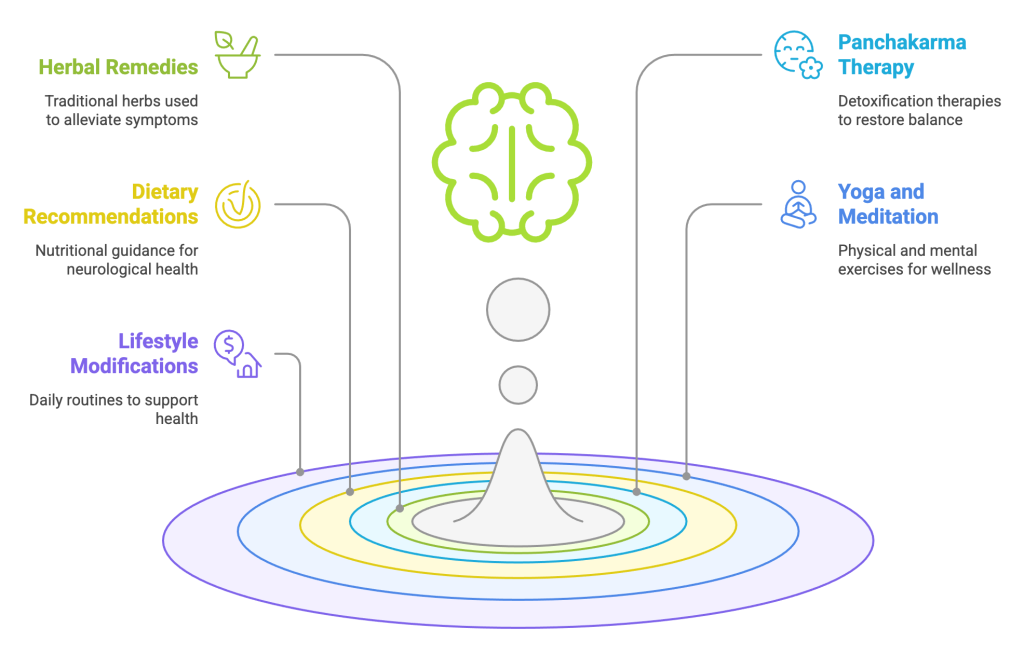
Ayurvedic treatment at Sukhayu Ayurved, Jaipur for cerebellar atrophy ensures that you avoid further deterioration of brain and movements and that you are able to lead a normal life.
The Ayurvedic treatment for cerebellar atrophy is based on three points:
- To Stop the progress of the disease.
- This is possible with stopping decay of brain cells.
- To help the patient to bring back mobility.
In nutshell the program under Dr. Pardeep Sharma M.D. (Ayurveda) is to restore the brain cells and to make sure the quality of life.
Cerebellar Atrophy
Cerebellar Atrophy is a disease in which brain tissue, particularly nerves, deteriorates. The cerebellum is an area of the brain that regulates movement and balance. As a result of this illness, a patient will lose his or her equilibrium and mobility.
Muscles are unable to think. The brain tells muscles what to do, and they go ahead and comply.
Because of this, when muscles do not obtain adequate signals from the brain, they become disabled in their ability to function. Because this is a progressive disease that must be treated swiftly, it is critical to act now.
So that a patient’s health may be quickly restored. We’ll go through the benefits of Ayurvedic therapy for cerebellar atrophy as well as all aspects of the disease in this section. Let’s learn more about the disease and its treatment.
Here are few facts about Cerebellar atrophy:
- This is a condition that is common in the age group of 45 -65 years.
- But there might be early onset of the disease too.
- In kids, its prevalence is 26/per 100,000.
- This disease causes severe problems with movements in patients.
- There is no such medicines or treatment for this condition.
- All treatments are for symptomatic, till the date.
- Ayurveda has a better approach for neurological diseases, therefore you can get better results with Ayurveda treatment for Cerebellar atrophy.
What is Cerebellar Atrophy
Before knowing about atrophy of the cerebellar region. It is important to know about the details of the cerebellar region of the brain. What activities took place in this region, can decide the future of any atrophy.
The term Brain Atrophy comes from two words or meanings, “atro” means loss and “phy” means increase. The brain develops slowly after the age of 40. When growth has stopped, this is called atrophy. It can happen because cells die (cell death). Some people believe that brain atrophy begins in one’s mid-20s; however, there is no proof for this claim.
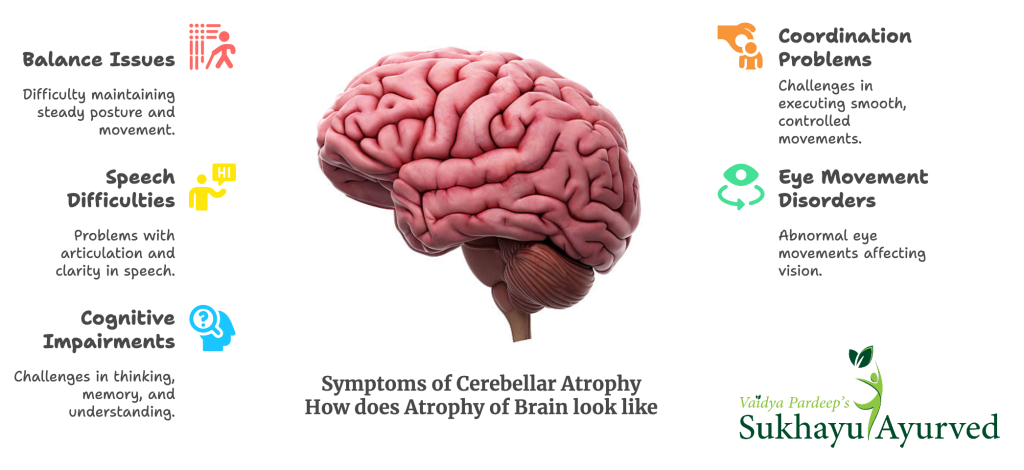
Cerebellum
The cerebellum is the famous- little brain. The word cerebellum literally means the same. This is the part of the
The tiny brain is known as the cerebellum. The phrase “cerebellum” refers to exactly the same thing. This is the hindbrain’s portion. It performs two important functions:
- Motor control is one of them.
- Cognitive Functions.
These mental capabilities include attention, language, anxiety, and pleasure. Because this sector regulates motor activities. As a result of this, when it is harmed, you will experience balance and limb movement issues.
The cerebellum also controls gross and fine motor activities in the body. This area of the brain is responsible for voluntary movements such as posture and coordination, as well as learning movement behaviors.
The deterioration of nerve cells- neurons in the cerebellum region causes neurological diseases such as Cerebellar Atrophy. The terms atrophic and atrophy are sometimes used synonymously, but they refer to different things. The word “atrophy” refers to the loss of tissue or mass. When tissue becomes incapable of performing its intended function, it is said to be “atrocious“.
In a nutshell, in this situation, the activities of the brain’s cerebellum section are reduced. Only all indications and symptoms of cerebellar atrophy appear as a result of this.
Causes behind Cerebellar Atrophy
There are two major factors behind cerebellar atrophy.
- Autoimmune Condition and
- Alcoholic/Nutritional cerebellar atrophy
The causes of cerebellar atrophy are unknown. There is no evidence to suggest that radiation, nor any other neurological disease, causes this condition. Because things aren’t very well understood about the brain’s roles, even about the difference between brain and mind, it is difficult to study cerebellar atrophy.
However, the underlying pathology is well defined.
The cerebellum controls the coordination of movement, balance, and equilibrium.
It may also control some cognitive tasks through feedback pathways that allow it to compare what it predicted would happen to what actually happened.
Cerebellar damage leads to problems with
- Gait,
- Speaking, or
- Swallowing (this can be tested by an MRA which provides detailed images of the blood flow in the brain),
- Posture,
- Facial expressions (caused by damage to nerves innervating parts of face muscles),
- Hand movements (perhaps because motor signals sent from the cortex are delayed due to faulty nuclei innervating muscle),
- Vomiting,
- Nausea,
- Spinning sensation (vestibular sense within the ear which senses acceleration causing tinnitus/vertigo).
Patients often show signs of exaggerated reflexes such as the patellar and the “oculocephalic” which tests for damage to cranial nerves 3, 4, 6, whether they breathe too much or too little, etc.
Sign and Symptoms of Brain Atrophy
In the event of cerebellar atrophy, a variety of symptoms occur. The presence of these signs and indicators is dependent on the degree of brain damage as well as the extent of cell degeneration. As a result, it’s impossible to anticipate that every patient will experience all indications and symptoms. However, in terminal cases, these problems manifest themselves fully.
- Cerebellar Ataxia:
Ataxia is imbalanced while walking. We all have a gait. The way one should walk. This is decided by the cerebellum. These are motor capabilities of this part of the brain. Where these atrophy changes take place. In this condition, a patient walks like a drunk person. Therefore legs will fall in wrong coordinations. - Dysarthria:
A patient feels discomfort while speaking. What a patient wants to say, he is not able to say the same. This is again a problem of coordination alone. - Dysphagia:
The problem in taking the foods is the exact word for dysphagia. The voice may go hoarse. Therefore it becomes hard to understand the voice. - Dementia:
The patient is okay with long-term memory, most of the time. But forgets the recent things. Noticeable change in the capacity of reasoning also occurs.
These are a few signs and symptoms of cerebellar atrophy. These symptoms look very much simple. But the person who suffers from this condition, he and his family persons can only understand the severity of this disease.
Ayurveda about Brain Atrophy
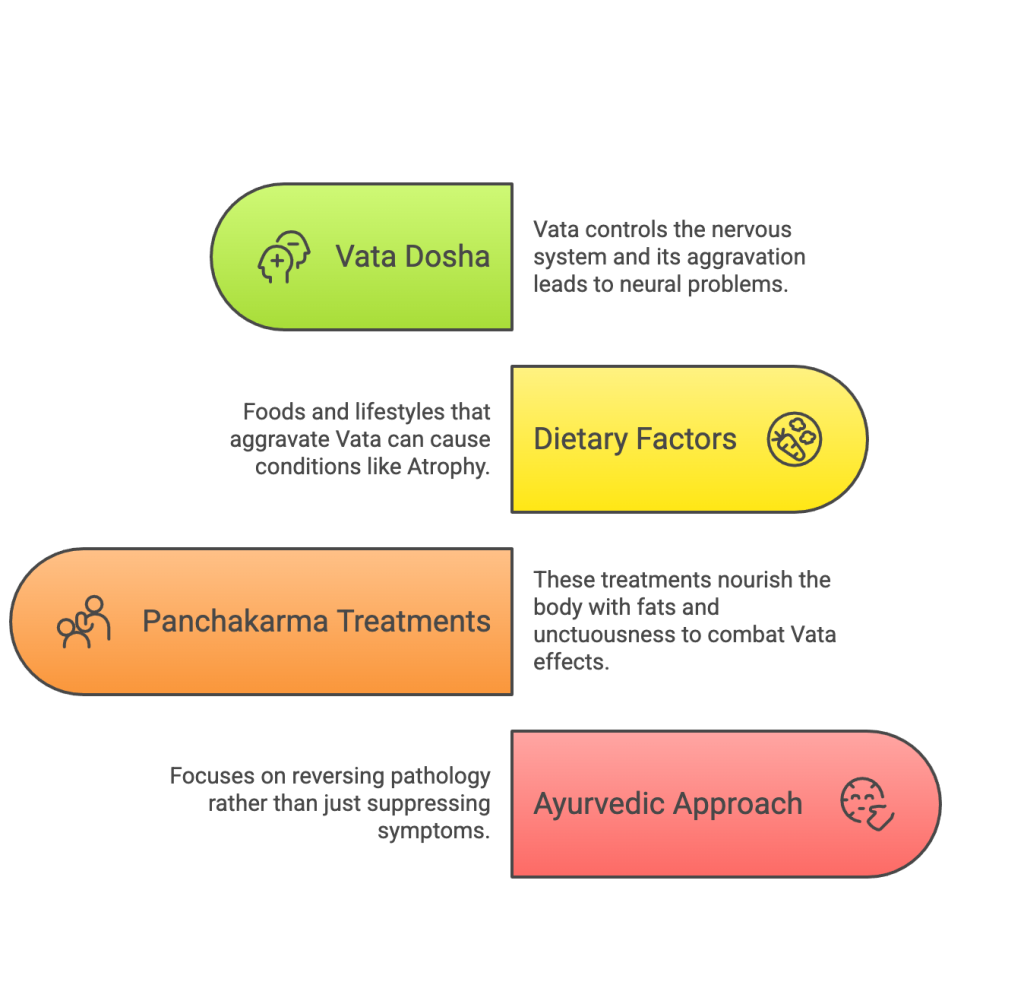
This particular condition is not described in Ayurveda as it is. The exact noun is not available in terms of the name of the disease in Ayurveda. For treatment, we need to understand the pathology.
Pathology is a process that leads us to problems. Unless we don’t reverse pathology. The condition will remain the same. Some medicines can help us to suppress signs and symptoms. This is not the treatment as per Ayurveda. Ayurveda believes in a reversal of pathology.
In the case of Cerebral Atrophy, the main thing is the cause why brain cells start decaying.
Ayurveda works on three Doshas. Vata is one of these three.
Vata controls the nervous system. So nervous system is all about Vata Dosha. Aggravation of Vata dosha leads to neural problems. The diet, and lifestyle which can aggravate Vata dosha causes conditions like Atrophy.
Because old age is a period for Vata Aggravation thus atrophy is common in old age. So everything is related to Vata. Sukhayu Ayurved has been researched well in all such cases. Cerebellar Atrophy is common in people who follow Vata Aggravating foods and lifestyles. Thus the approach for the Ayurvedic treatment for Cerebellar Atrophy is according to Vata Vyadhi.
Vata is dry thus it dries up the tissues.
Therefore we need to nourish the body with “fats” and unctuousness. We can do that through Panchakarma treatments. We have seen more wonderful results in all such cases with Ayurvedic treatments.
Ayurvedic Treatment for Cerebellar Atrophy
Generally, it is asked- is there are some Ayurvedic medicines for Cerebellar Atrophy?
Yes!! There is the treatment for Cerebellar atrophy with Ayurveda. Sukhayu Ayurveda provides the treatment through Panchakarma interventions. Basti is a drug of treatment for all neural disorders. There are many types of Bastis. Especially relevant Basti is selected according to the condition of patients. In addition to all these Yoga is another dimension that we add to the treatment for atrophy.
Process of Ayurveda Treatment for Hindbrain Atrophy
For the ayurvedic treatment for cerebellar atrophy, we work on the basic root cause of the problem. This all goes in progress.
- The first step is the assessment of the patient.
- We don’t sell medicines for this condition because without assessment nothing can be said about this condition.
- There are two types of treatment-
- Through Medicines
- Through Panchakarma and Medicines
- When you just need to take medicines you need to come to Jaipur for once and thereafter you can continue medicines back home.
- But for the Panchakarma treatment, a patient will need to admit with us for 21 days.
- Medicines continue for 18 to 24 months.
- Along with Medicines, a patient needs to continue some Mudras and Pranayama back home.
What to Expect from Ayurvedic treatment for Cerebellar Atrophy
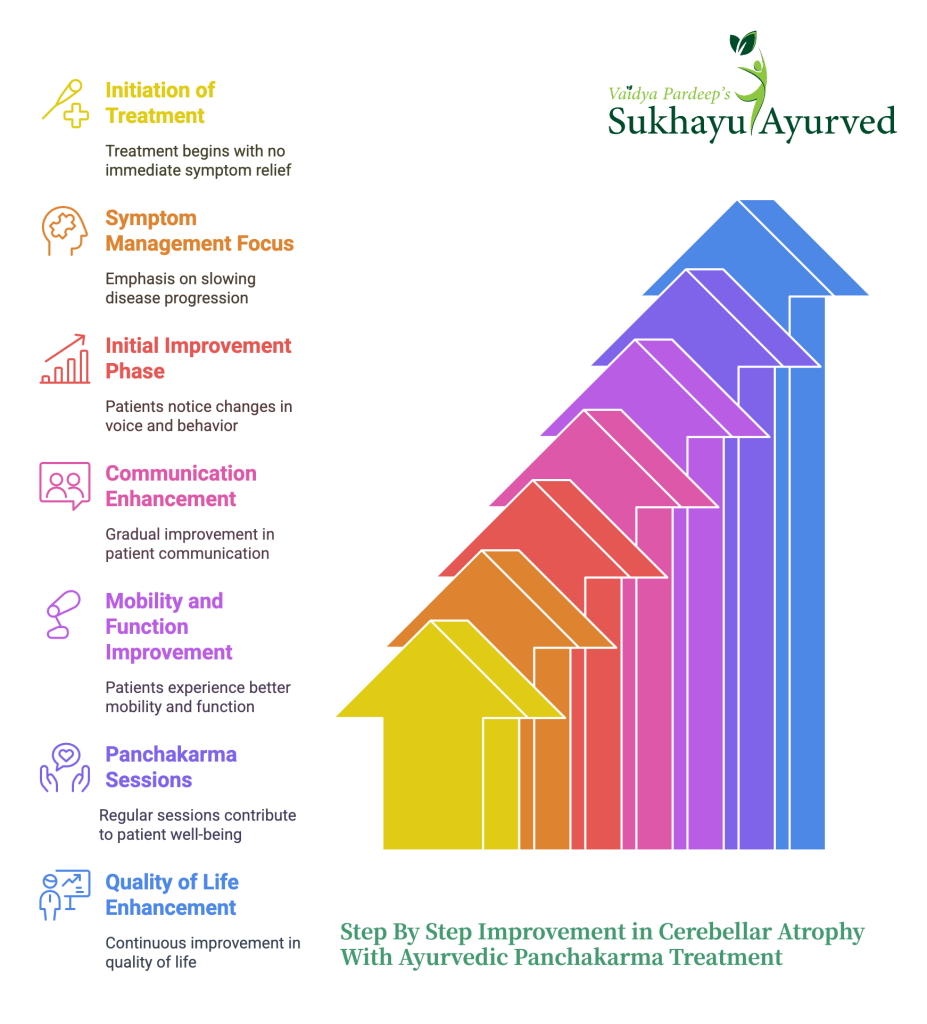
There are certain things we always expect from ayurvedic treatment for Cerebellar Atrophy this condition.
- Symptoms don’t reduce immediately in our treatment.
- Because the main aim of the treatment is to slow down the process of the disease.
- Patient starts feeling better after two to three weeks only.
- The first change starts appearing in the quality of voice and mental behaviour.
- Therefore a patient’s communication improves with time.
- With time and practice, walk of patient improves and patient can work better.
- The following sessions of the Panchakarma, helps in making the patients feel better.
- And quality of life keeps on improving with time.
Testimonial
When I had lost all hopes for the recovery of my mother who was suffering from Atrophy in her brain. I had lost all hopes and in the meantime, I decided to opt for Ayurveda. And my decision proved right. Yes, my mother is not 100% healthy but Sukhayu Ayurveda people made her life better with treatment.
Ramnik Singh
Teacher
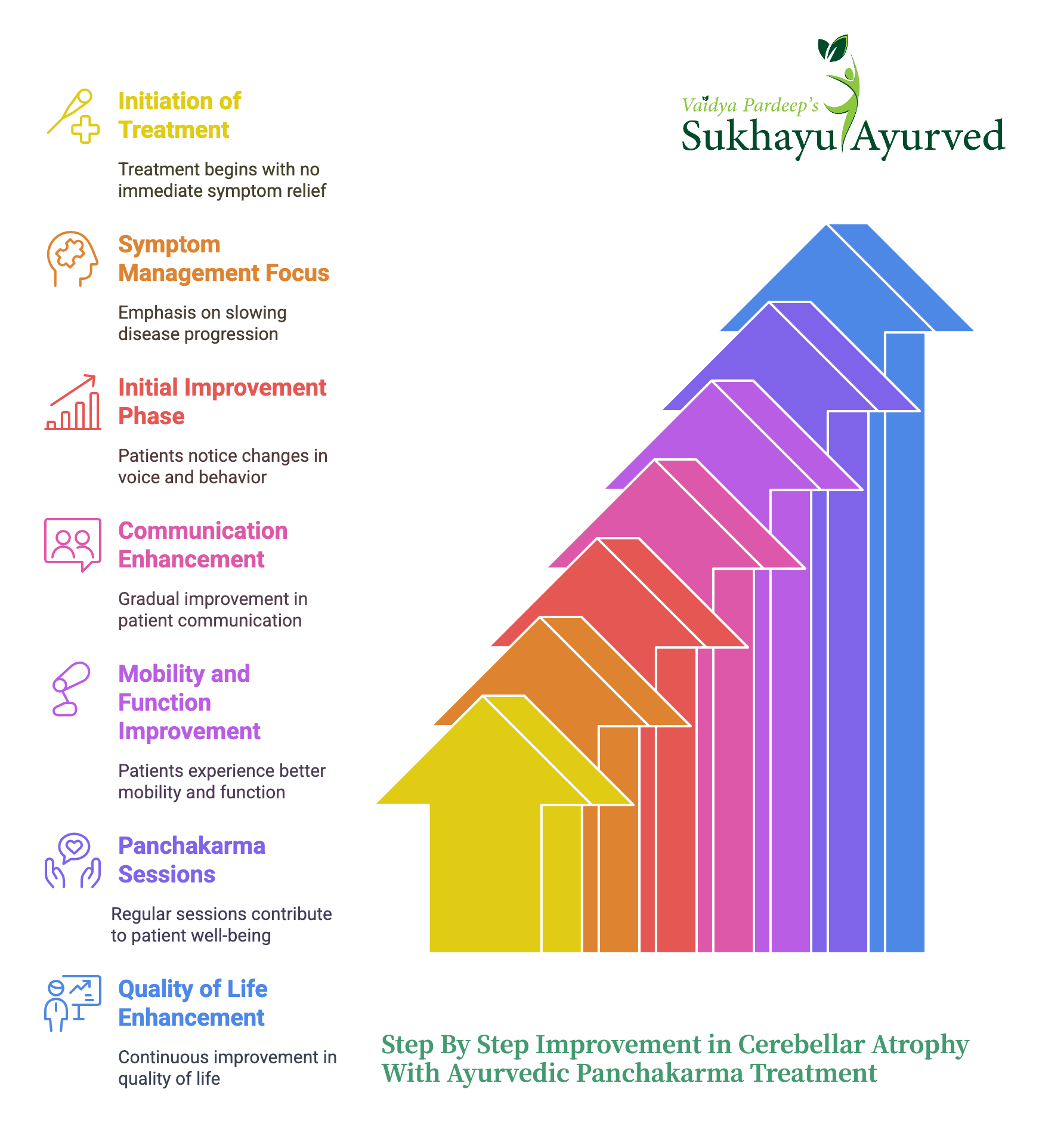
Telephone No.9050802060







